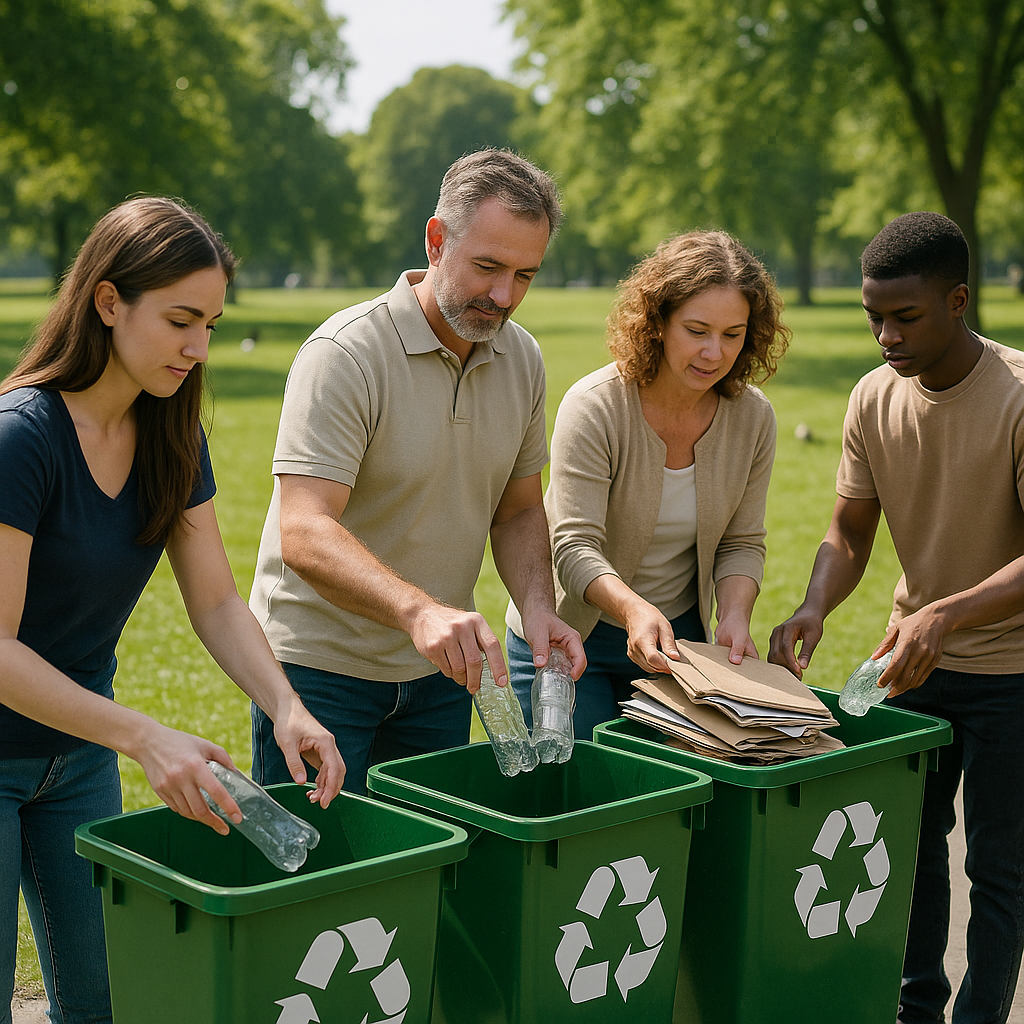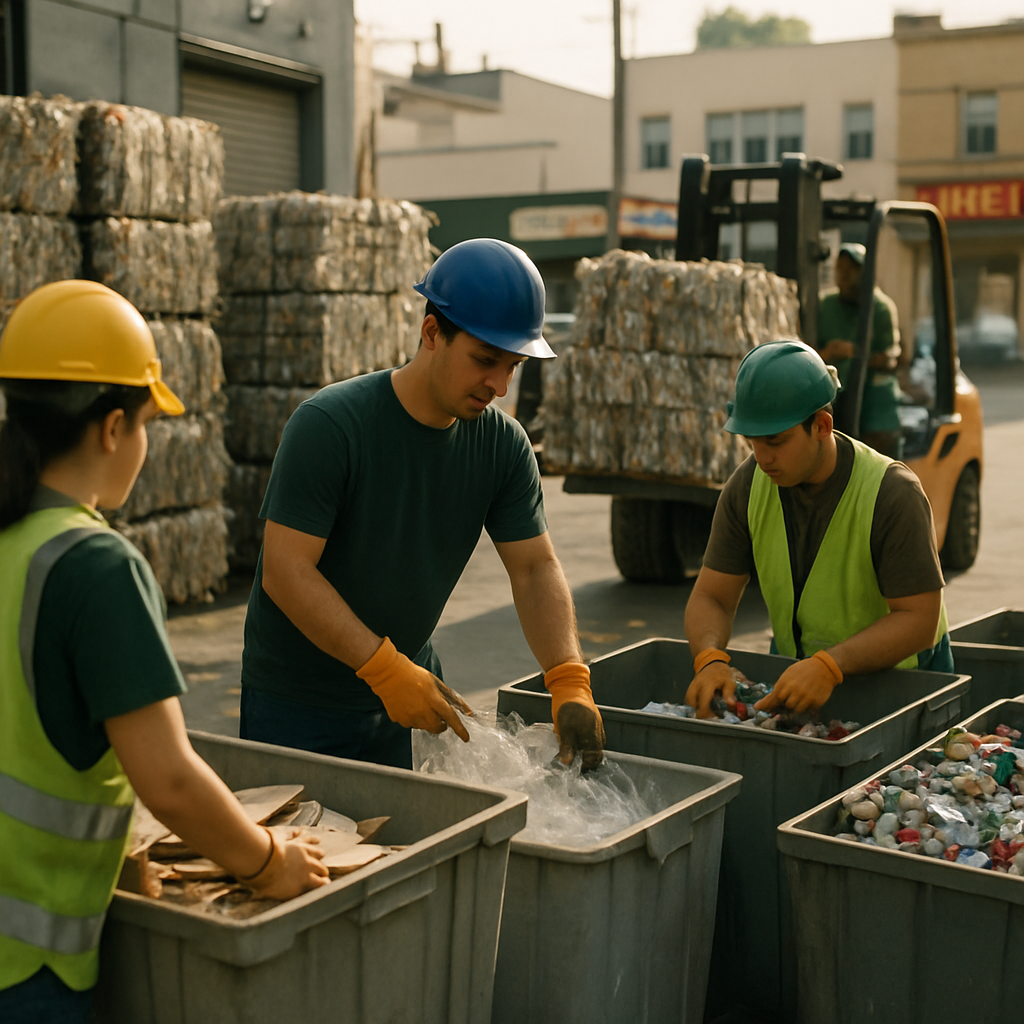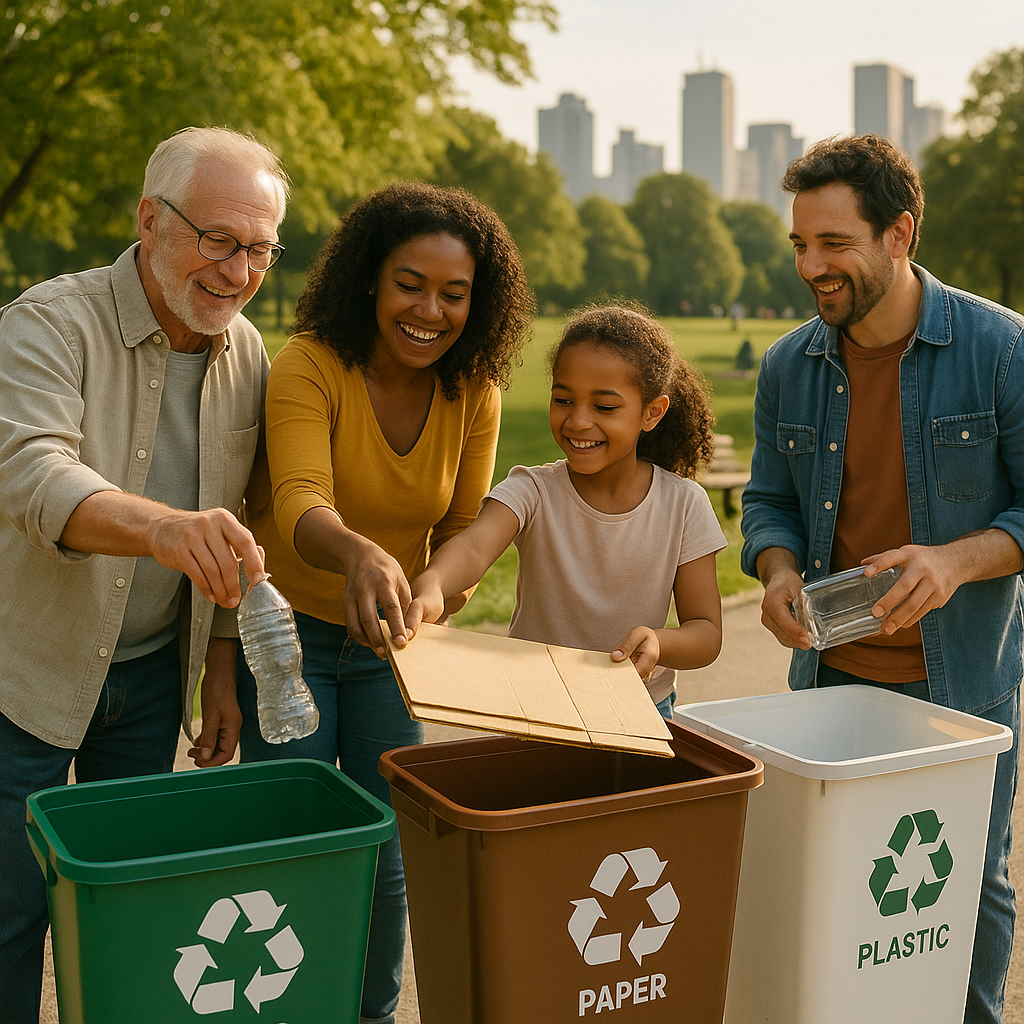5901 Botham Jean Blvd, Dallas, TX 75215
Key Benefits of Public Recycling: Environmental and Community Impact
August 15, 2025Each year, communities across the United States dispose of over $1.2 billion worth of recyclable materials in landfills. This not only results in waste but also represents missed opportunities for environmental protection and community development. Public recycling programs offer powerful solutions to this challenge, providing benefits that go beyond simple trash reduction.
Effective community recycling initiatives offer three main advantages: environmental preservation, economic growth, and social cohesion. When municipalities prioritize recycling, they foster cleaner environments and build economic resilience through job creation and cost savings. The environmental impact is significant—recycling can reduce greenhouse gas emissions by up to 30% compared to landfilling the same materials.
Is your community fully capitalizing on these benefits? From creating sustainable jobs to preserving natural resources, public recycling transforms potential waste into valuable assets that strengthen community bonds and support long-term sustainability goals.
How Does Recycling Benefit the Environment?

Recycling significantly benefits our environment through various avenues. By diverting materials from landfills and reintegrating them into production cycles, recycling tackles pressing environmental challenges.
Conservation of Natural Resources
Recycling reduces the need to extract and process new raw materials from the Earth. Using recycled materials in manufacturing preserves crucial natural resources. For instance, recycling paper saves trees and forests, which are vital for biodiversity and carbon sequestration.
The environmental benefits are compelling. Using scrap steel instead of virgin ore reduces water consumption by 40% and generates 97% less mining waste. Similarly, recycling aluminum uses 95% less energy than extracting and processing new aluminum from bauxite ore.
Reduction in Greenhouse Gas Emissions
Recycling processes typically require significantly less energy than manufacturing products from virgin materials, resulting in lower carbon emissions. EPA data shows that recycling and composting municipal solid waste saved over 193 million metric tons of carbon dioxide equivalent in 2018.
Recycling one ton of paper reduces greenhouse gas emissions by about one metric ton of carbon equivalent, equating to removing a car from the road for two months.
Improved Air and Water Quality
Manufacturing with recycled materials generates less air and water pollution compared to producing goods from raw materials. Recycling one ton of paper can save about 7,000 gallons of water and reduce air pollution by up to 74% compared to using virgin materials.
Recycling also prevents potentially harmful materials from reaching landfills, where they might leach into soil and groundwater. Landfills are the largest source of human-caused methane, a greenhouse gas 21 times more potent than carbon dioxide in its warming effect.
Energy Conservation
Recycling offers substantial energy savings for various materials. Making products from recycled steel saves 60% of production energy, recycled newspaper 40%, recycled plastics 70%, and recycled glass 40%. These savings reduce reliance on fossil fuels and their environmental impacts.
Even small-scale recycling matters. Recycling just 10 plastic bottles saves enough energy to power a laptop for over 25 hours.
Waste Reduction and Landfill Diversion
Recycling significantly reduces the waste volume sent to landfills. This is crucial, as landfill space is limited, and their environmental hazards persist long after closure. The EPA acknowledges that all landfill liners will eventually leak, potentially contaminating nearby soil and water.
About 20% of the nation’s most hazardous Superfund sites are former solid waste landfills, highlighting the long-term environmental risks of landfills.
[[artifact_table]] Environmental Benefits of Recycling Common Materials [[/artifact_table]]Ecosystem Protection
By reducing the need for raw material extraction, recycling helps protect natural habitats and ecosystems. Mining, logging, and other extraction activities can severely disrupt or destroy habitats, impacting countless species and reducing biodiversity.
Recycling also helps keep waste out of oceans and waterways, protecting marine ecosystems from plastic pollution and other harmful substances that can harm wildlife and disrupt ecological balance.
What Economic Advantages Does Public Recycling Provide?

Public recycling programs offer significant economic benefits beyond just environmental protection. These initiatives create jobs, generate tax revenue, and provide substantial cost savings for communities of all sizes.
The recycling industry generates an estimated 534,506 jobs annually across the United States. These positions cover various skill levels and sectors, from collection and processing to manufacturing and sales. When it comes to job creation, recycling significantly outperforms traditional waste management. Processing 10,000 tons of waste through recycling creates 36 jobs compared to just 6 jobs for the same amount sent to landfills.
According to the EPA’s Recycling Economic Information (REI) Report, recycling and reuse activities generate approximately $37.8 billion in wages and $5.5 billion in tax revenues nationwide. This equates to about $65,230 in wages and $9,420 in tax revenue for every 1,000 tons of materials recycled. Communities directly benefit from these economic injections through increased local spending and enhanced public services.
Communities also realize significant cost savings through reduced landfill tipping fees. As landfill space becomes increasingly scarce and expensive, diverting materials through recycling programs helps municipalities avoid these rising costs. For example, Kinston, North Carolina, saved $100,000 in fuel and labor costs by implementing an improved recycling program with larger collection containers and automated pickup.
Revenue generation is another significant economic advantage of public recycling programs. Municipalities can sell collected recyclables to manufacturers, creating a circular flow of materials and money within the local economy. Some materials offer particularly strong economic returns. Aluminum recycling, for instance, is especially valuable due to the substantial energy savings compared to producing new aluminum from raw ore.
The economic multiplier effect of recycling extends beyond direct jobs and revenue. Supporting industries like equipment manufacturing, technology services, and transportation benefit from robust recycling infrastructure. This multiplier effect amplifies the economic impact throughout the community, creating additional opportunities for growth and development.
Communities with effective recycling programs often experience broader economic benefits. Research from South Carolina shows that every 1,000 tons of materials recycled creates approximately 1.68 new jobs with an economic impact of $236,000. This activity generates nearly $80,000 in personal income and about $3,700 in additional tax revenue for local governments.
The recycling sector also bolsters local economic resilience. While traditional manufacturing jobs have declined in many regions, recycling-related employment has consistently grown. North Carolina provides a compelling example: between 1994 and 2004, recycling jobs in the state increased from 8,700 to 14,000, even as traditional manufacturing positions decreased significantly.
Public recycling programs can foster sustainable business ecosystems where one company’s waste becomes another’s resource. These industrial symbiosis arrangements maximize resource efficiency while creating new economic opportunities. The Catawba County EcoComplex in North Carolina exemplifies this approach, housing businesses that utilize each other’s by-products in a closed-loop system.
How Does Recycling Strengthen Communities?

Recycling initiatives act as catalysts for community building. When neighbors join local recycling programs, they engage in collective action that goes beyond individual benefits. This shared commitment creates bonds among residents who might otherwise have limited interaction.
Community-wide recycling campaigns bring diverse groups together around common environmental goals. Programs like neighborhood collection events make participation accessible to everyone, regardless of socioeconomic status. When communities organize electronics recycling drives or special material collection days, they offer opportunities for meaningful social connection while addressing pressing environmental concerns.
Creating a Culture of Environmental Stewardship
Successful recycling programs transform how community members view their relationship with the environment. Seeing others recycle or participate in clean-up events normalizes sustainable behaviors, establishing environmental stewardship as a community value rather than an individual choice.
Educational workshops about proper recycling practices bring people together to learn and share knowledge. These gatherings create spaces for dialogue about broader environmental issues facing the community. The resulting awareness often inspires collective action beyond recycling, such as habitat restoration or energy conservation initiatives.
Local schools play a vital role in fostering this culture. When students learn about recycling and bring these lessons home, they become environmental ambassadors within their families. School recycling competitions engage young people and start community-wide conversations about sustainability.
Building Civic Pride Through Visible Results
Communities that prioritize recycling often see tangible improvements in their local environment. Cleaner streets, reduced litter, and well-maintained public spaces become sources of community pride. These visible outcomes reinforce the value of collective effort and encourage continued participation.
Many communities celebrate their recycling achievements through public recognition. Annual reports highlighting waste diversion rates or sustainability awards acknowledge community-wide accomplishments. These celebrations strengthen residents’ identification with their community and its environmental values.
Overcoming Challenges Together
Effective community recycling programs require overcoming shared challenges. Contamination in recycling streams provides opportunities for neighbors to educate each other about proper sorting practices. When communities tackle these problems collectively, they build problem-solving skills applicable to other community issues.
The logistics of recycling collection often require collaboration between residents, local government, and businesses. These partnerships strengthen community infrastructure. When stakeholders work together to optimize recycling systems, they develop cooperative skills useful for other community initiatives.
Even setbacks in recycling programs can become opportunities for community bonding. Market fluctuations or policy changes affecting recycling operations demand adaptive responses. Communities navigating these challenges together develop resilience and a stronger collective identity.
Conclusion: Embracing Public Recycling for a Sustainable Future

Public recycling programs are crucial for sustainable community development. They provide a broad range of benefits that influence all aspects of community life. Environmentally, they help reduce landfill waste, lower greenhouse gas emissions, and conserve valuable natural resources, resulting in cleaner air, water, and surroundings for all.
The economic impact of recycling is equally significant. Communities with strong recycling initiatives create more jobs across various skill levels compared to traditional waste disposal methods. These jobs often offer competitive wages, boosting local economies through increased purchasing power. Additionally, revenue from recycled materials and savings on landfill tipping fees further enhance community resilience and stability.
For assistance with implementing effective recycling solutions for your business or municipality, contact Okon Recycling at 214-717-4083.
